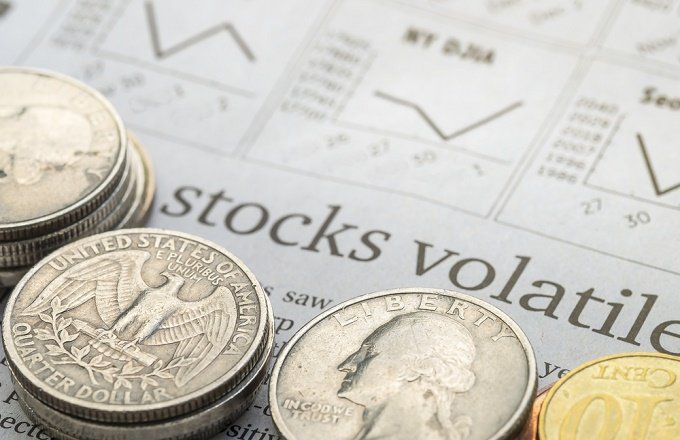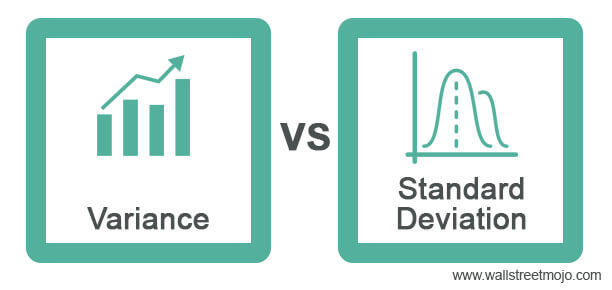Difference Between Standard Deviation Vs. Variance
Feb 02, 2024 By Susan Kelly
Both calculate the standard deviation of the figures included in a data set by calculating the mean of a certain collection of statistics. They are significant because they help determine the distribution of returns and the market's volatility. On the other hand, there are fundamental distinctions between the two. The standard deviation is a method for calculating the square root of the variance, while the variance itself refers to the average distance, in points, of each value from the mean.
Standard Deviation
The standard deviation is a measurement used in statistics to determine how much a bunch of values deviates from the average. A data set's standard deviation may be considered an estimate of the average distance between its integers. The variance is used in the calculation of this measure, and the square root of that value is returned. This indicates that you need to calculate the standard deviation, or Difference, between each data point and the mean. Because of this, squares are used in the computation of variance because they give greater weight to data that is farther away from the mean than information closer to the mean. This approach also prevents differences above the mean from canceling out differences below the mean, which would otherwise lead to a variance equal to zero.
Variance
The average squared deviation from the mean is a variable's variance. First, compute the distance separating each point in the data set from the mean value to determine the magnitude of the variance. After determining that, you should square the numbers and take an average. For illustration's sake, if a collection of numbers spans from one to ten, the mean of those values will be 5.5. The answer to the question is 82.5 if you square the disparities between each number and the mean and determine the total of those differences.

Key Differences
There are many more significant distinctions between variance and standard deviation, in addition to the method by which each is computed. People may use a statistical measure called the standard deviation to identify how wide out the values are in a data collection. For one reason, the standard deviation is a metric people can use. Conversely, the variance provides a numerical representation of the degree to which the individual values in a data collection deviate from the mean.
The square root of the variance is the standard deviation, and the variance is presented in the form of a percentage (especially in the context of finance). Consequently, the standard deviation may be higher than the variance, given that the square root of a decimal will be more (and not less) than the initial value in situations where the variance is lower than one (1.0 or 100 percent ). Similarly, when the variance is more than one, the standard deviation will be lower than otherwise (e.g., 1.2 or 120 percent ).
The Role of Variance and Standard Deviation
The relevance of these two ideas cannot be overstated for anybody involved in trading or investing. This is because they are used in measuring security and market volatility, which, in turn, plays a significant part in developing a lucrative trading strategy. One of the most important tools that analysts, portfolio managers, and financial advisers use to evaluate risk is the standard deviation. The investment is considered at a lower risk when the numbers in the group are closer to the mean. However, if the group of numbers is significantly different from the mean, the prospective investor faces a higher risk associated with the transaction.
Securities that are trading at prices that are relatively near to their means are seen as having a lower level of risk since it is more probable that they will continue to behave in the same manner. Securities with huge trading ranges and a tendency to spike or change direction are often considered to have a higher level of risk. Risk is not necessarily a negative thing in and of itself when it comes to investing. This is because investments with a higher degree of risk typically have a greater potential for a payout and greater rewards.

Example of Standard Deviation Vs. Variance
Let's look at standard deviation and variance examples to see how both of these principles work in practice. Imagine that you have a string of numbers and want to calculate the standard deviation for the entire group. You need to know these numbers: 4, 34, 11, 12, 2, and 26. We must calculate the mean as well as the average of the data. This being the case

Investing in Food Stocks: A Delicious Path to Financial Growth
Are you hungry for investment opportunities? Explore the world of food stocks to diversify your portfolio.
Oct 16, 2023 Susan Kelly

Things to Consider While Spending Money On a Car
Buyers of automobiles should not devote more than ten percent of their after-tax income to the payment of a vehicle loan, and they should not devote more than twenty percent of their take-home pay to total automotive expenditures.
Feb 28, 2024 Susan Kelly

What are the taxes on a 401(k) distribution?
Learn the basics of understanding and calculating your taxable income from a 401(k) distribution. Get expert tips on how to reduce your tax liabilities
Nov 22, 2023 Susan Kelly

A Guide to the Tax-Filing in 2023: What's My Tax Bracket?
Every taxpayer needs to understand their federal tax bracket, especially in an ever-changing environment like the U.S. Tax Code of 2023. Understanding your tax filing in 2023 is key to avoiding costly mistakes. Learn what your tax bracket is and how to use it best.
Oct 04, 2023 Triston Martin

Deciphering the Priority of Student Loan Repayment: A Comprehensive Overview
This resource provides invaluable insights into the importance of prioritizing student loan repayment, strategies for efficient debt management, and comprehensive information about various repayment options.
Nov 02, 2023 Triston Martin

Unraveling Personal Loans: A Comprehensive Guide to Financial Freedom
Curious about personal loans? Explore the financial universe with our guide on the pros and cons of personal loans, unlocking insights to help you make informed decisions.
Nov 30, 2023 Triston Martin